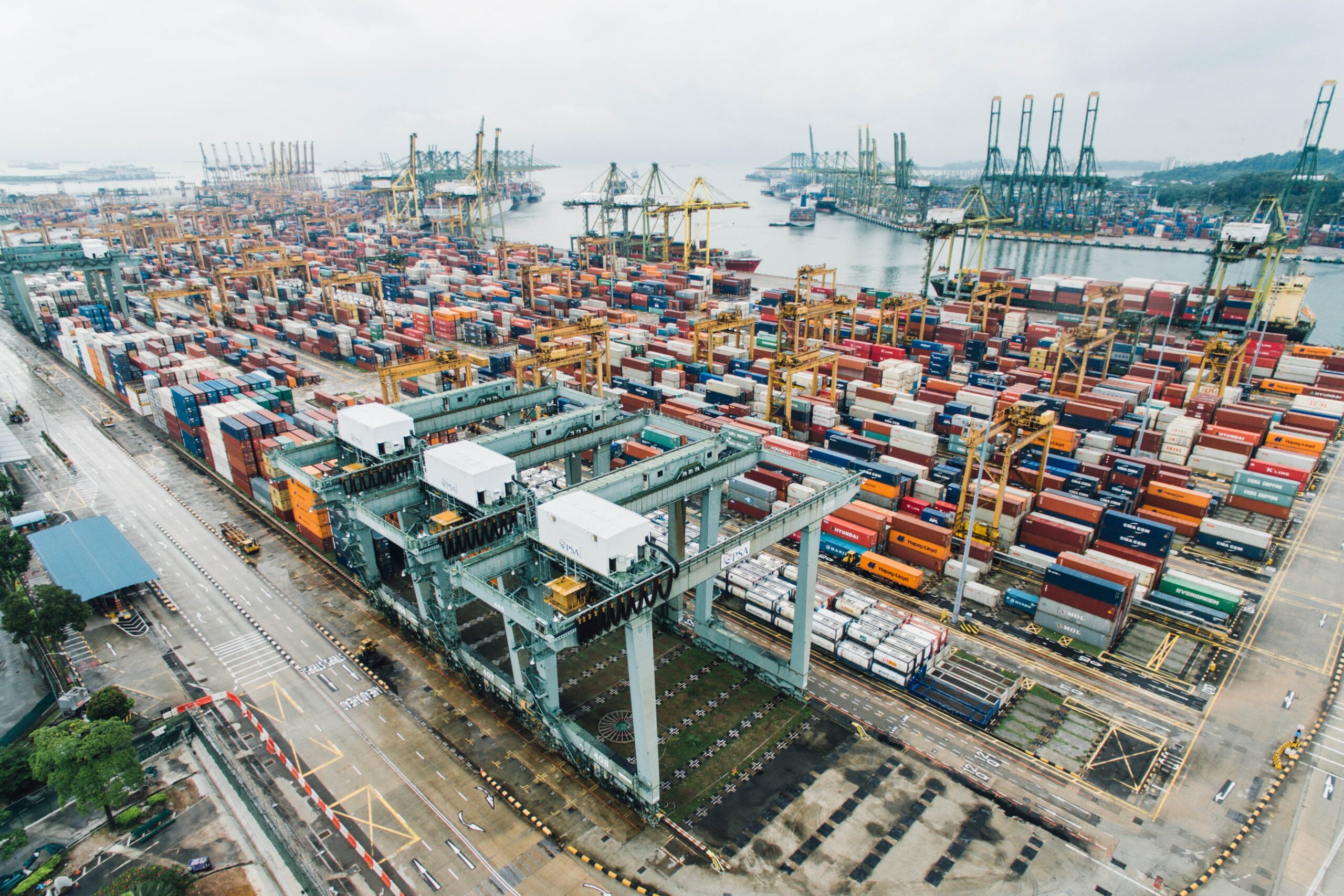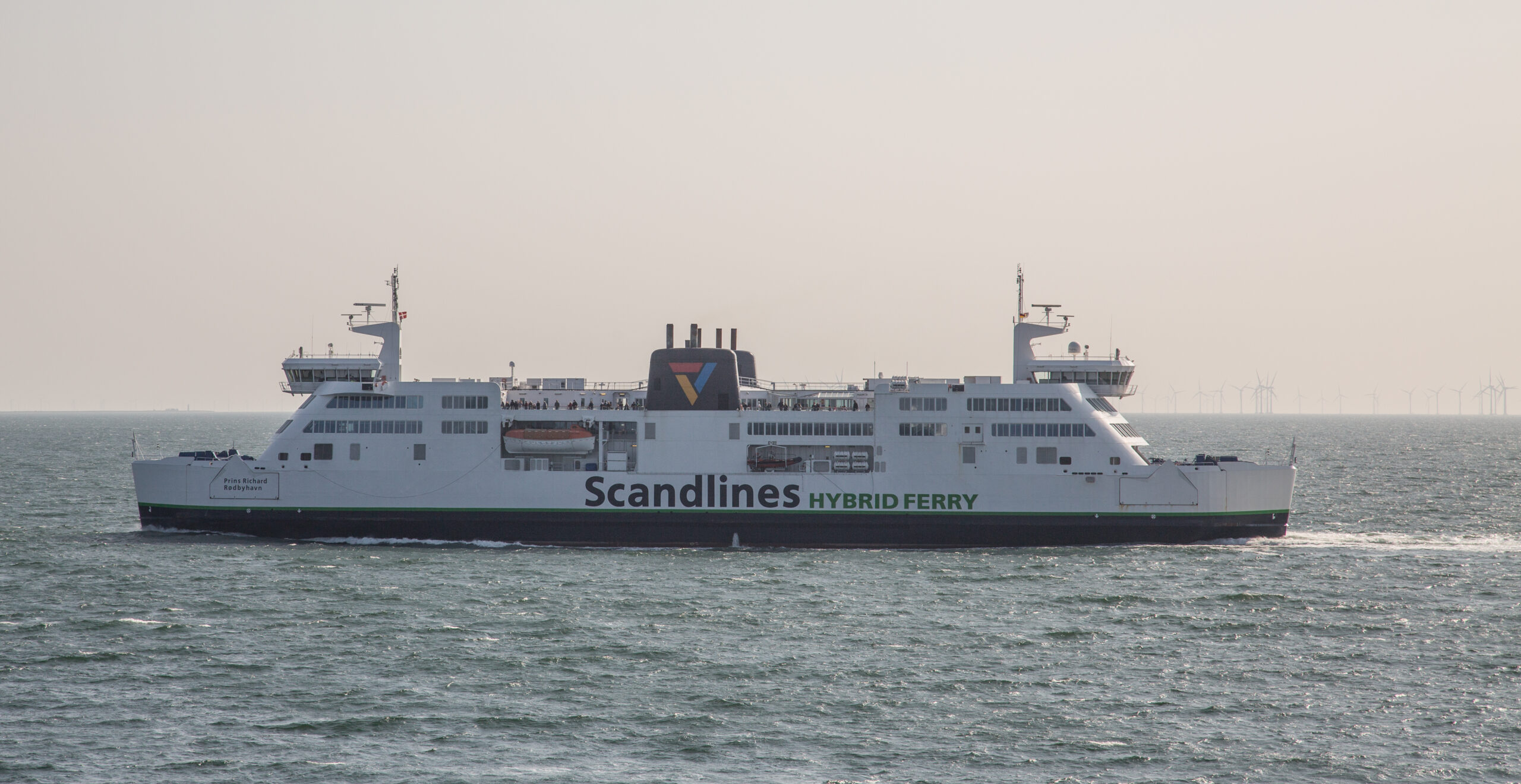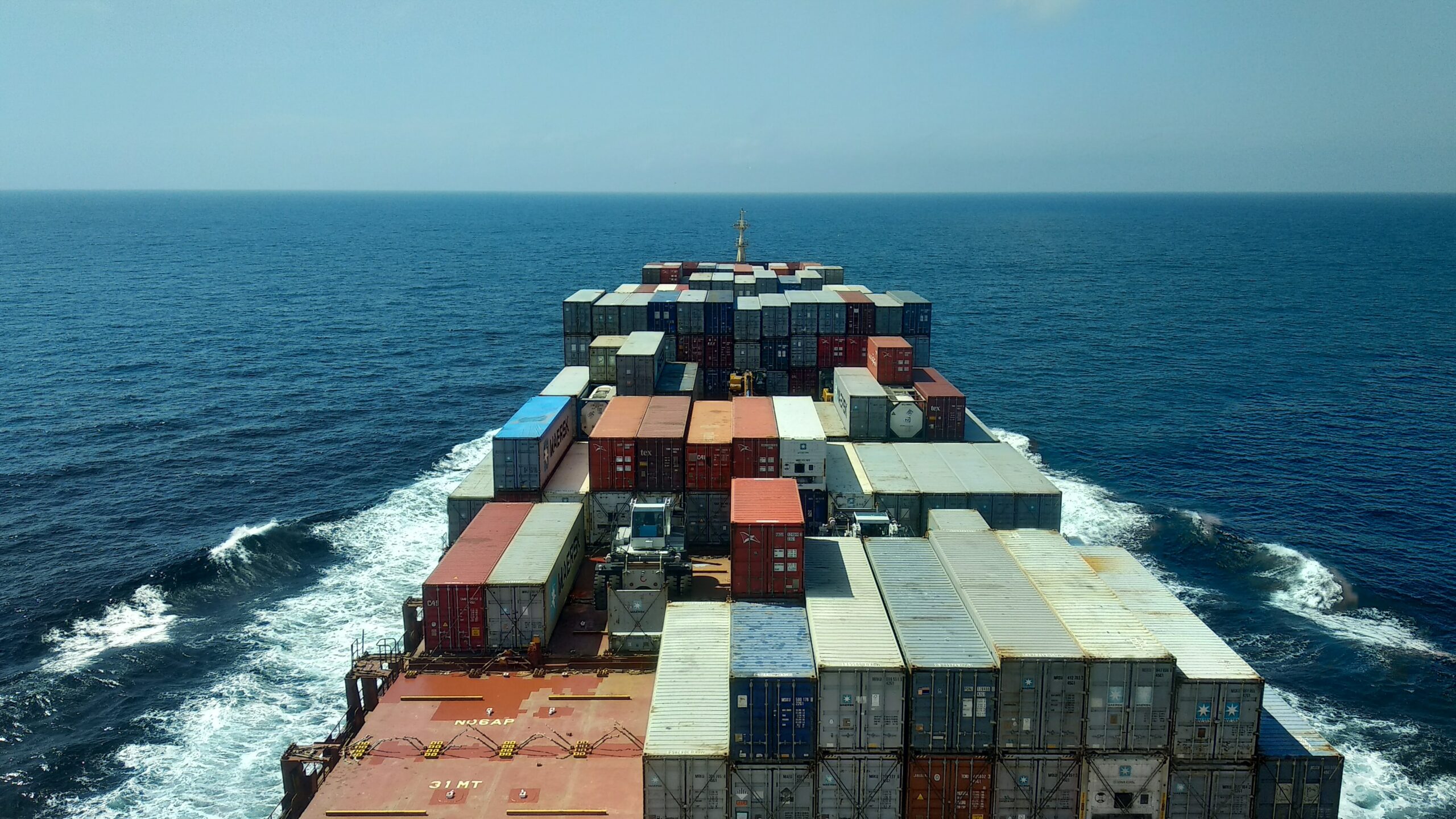
Quietly, at the tail-end of 2021, the Yara Birkeland set sail from Porsgrunn, a town in the south-east of Norway. The 80-metre, 3200-tonne ship is the first fully electric autonomous cargo ship in the world, powered by eight batteries with a capacity of 6.8 MWh – the equivalent of 100 Tesla cars – which is drawn almost exclusively from hydropower generation. According to Yara, the Norwegian fertiliser manufacturer behind the new ship, it will replace approximately 40,000 diesel-powered truck journeys a year between their operations throughout Norway – cutting cost, emissions, air pollution and congestion on Norwegian roads.
While the Yara Birkeland is smaller than some of the cargo ships entering circulation today, which are still fuelled by heavy oil and diesel, the growth in fully electric ships is picking up pace. From cargo ships to ferry boats, electrified shipping is beginning to make waves in maritime markets, with the global market estimated to be valued at $16.2 billion by 2030 and big players such as Siemens AG, General Electric and ABB all getting in on the action. If coupled with moves to reduce the total material bulk of trade in favour of more localised production and consumption, and see existing fossil-fuelled shipping retired, steps like this could propel rapid ocean shipping decarbonisation.

And the growth in electric shipping can’t come soon enough. The climate and health impacts of fossil-fuelled shipping are as vast as they are pervasive. The roughly 90,000 cargo ships navigating the world’s oceans burn 370 million tonnes of fuel each year – and produce 20 million tons of sulphur oxide. According to IDTechEx One, a large cargo ship emits as many carbon dioxide emissions as 70,000 cars, as much nitrogen oxide as two millions cars, and as much fine dust and carcinogenic particles as 2.5 million cars. When exploring global levels of air pollution, international shipping accounts for between 18 to 30 percent of the nitrogen oxide in the atmosphere. As nearly 70% of ship emissions are generated within 400 km of the mainland, near ports and coastal cities, there are very real concerns over the public health impacts of international shipping.
International shipping is a very large and tricky piece of the decarbonisation puzzle. While international freight accounted for between 2-3% of global energy-related CO2 emissions in 2020, more than Germany’s annual emissions, the growth in emissions from this sector had been accelerating from 2010 due to bumper demand for maritime trade. This was until Covid-19 took hold, which dampened both demand and activity, creating what has been termed a ‘quarantine of consumption’, a reversal of rising overconsumption that needs to be part of the longer term picture too. Yet yearly snapshots of shipping emissions fail to capture the challenge of decarbonisation. Currently, ocean-faring ships carry more than 80% of global trade by volume and, as a result, could be contributing around 17% to global emissions by 2050 without deep and far-reaching decarbonisation. This, according to the UN’s International Maritime Organization (IMO), would constitute an increase in shipping emissions of 250%. The climate cannot afford such growth.
Pinning down the responsibility for international shipping is also a fraught endeavour. According to established global guidelines, shipping emissions that occur when vessels go from one port to another fall under the remit of the IMO, while ships that move between ports within a nation (like Yara Birkeland) are the responsibility of the country and should, for instance, be accounted for in Nationally Determined Contribution’s (NDC) under the Paris Agreement.

But this very rarely happens. Few nations inspect shipping emissions closely and even fewer include shipping within their NDCs. Due to these crossed wires, the IMO also relies on simplified estimates for international shipping emissions that may underestimate their true extent. One study from UCL suggests that 30% of total shipping emissions fall within national government responsibility, nearly twice the amount previously estimated.
For maritime transport to reach net-zero by the middle of this century, then the dominant and most competitive ships available must be zero carbon by 2030 due to the lifecycle of the ships. And while electrified ships are beginning to enter circulation, decarbonising shipping will require an ‘all-hands-on-deck’ approach, where all clean technologies – from alternative fuels to floating charging points – are deployed to drive down costs, squeeze out fossil fuels and deliver deep emissions cuts. There are also large emissions savings to be made from operational changes and efficiency gains. Combining these with clean energy technologies and shipping’s emissions could be cut by 71% by 2050, according to the ICCT. All these challenges would also be made easier if the sheer volume of traded goods, especially those to high-consuming, wealthier markets, was reduced.
The tides of international shipping, however, may be shifting. Current sky-high fossil fuel prices are eroding profit margins within international shipping, while continual breakthroughs in battery technology, tighter regulation around pollution in ports, and the role that electrified cargo ships can play in national decarbonisation are all shifting the winds of industrial and energy policy towards electrified vessels.
While electrifying the international cargo shipping fleet would require a monumental mobilisation of finance, policy and clean technology, international shipping is no stranger to renewable energy or electricity. After all, ships were powered by the wind for thousands of years before the advent of steam engines in the 19th century – and some businesses are even trying to bring the noble sail back to decarbonise shipping.

Even today, many ocean faring cargo ships are partly electrified through diesel-electric transmission systems. Approximately 80 percent of cargo ships use diesel generators to generate electricity, which then powers the electric engine that moves the ship’s propeller. The advantages of this system are plentiful: it saves up to 20 percent of the fuel on board the ship, electrified systems consist of fewer components and are therefore less prone to faults, and these systems suffer from less wear and tear giving them greater longevity. When it comes to transition in the world of international shipping, electrification has a historical precedent.
But despite huge breakthroughs in battery technology over the last decade, the energy density of batteries is yet to reach the levels required to conquer the longest trade routes of the Seven Seas. Current technology, however, is more than sufficient to electrify some of the shorter international routes, which would deliver substantial emissions cuts, while also offering a route to help decarbonise domestic transport systems through greater consolidation and replacing on-road cargo.
Here lies the greatest opportunity for electric ships to curtail emissions growth. Shorter shipping routes – both between nations and within them – can be electrified, while ferries and maritime transit have proven ripe for electrification. And while the rapid deployment of these vessels bends shipping’s emissions curve, battery technologies will improve and costs will fall further, helping to chip away at those lengthy hard-to-decarbonise shipping routes.
Battery technology just keeps getting better – and that’s good news for shipping firms looking to curtail emissions. In 2019, international shipping companies installed more batteries than in the eight years prior to this. While larger boats, navigating longer routes, are more difficult to fully electrify through battery technology, the development within hybrid systems and onshore charging stations are set to reduce shipping’s total emissions.

Decarbonisation aside, there is a financial imperative to fit larger cargo ships with hybrid systems as they reduce fuel consumption which cuts cost, lessens the noise created by a ship that can disrupt marine life, and slashes the amount of maintenance and the risk of engine failure. Given the social, environmental and financial benefits of both full- and part-electrification, it is no surprise that batteries are becoming an increasingly common feature onboard ships of all shapes and sizes. The marine battery market is expected to enjoy an annual growth rate of nearly 20%.
Issues remain, however, around recycling batteries at the end of their lifecycle. As some of the leading battery technologies in shipping, such as lithium ion batteries, contain dangerous pollutants there needs to be systems and infrastructure in place in ports to handle recycling and replacing batteries safely and sustainably. And of course there are many social and environmental impacts associated with the extraction of lithium.
Shipping’s dominant role within global trade means that policy is beginning to target the sector from a variety of angles, from attempts to curtail marine pollution to realigning the insurance industry. Interventions from port authorities to reduce both marine and air pollution are forcing many shipping companies to weigh up electrifying their fleets.
For instance, shipping giant Maersk announced plans at the beginning of 2022 to install hundreds of floating offshore charging stations around the world to allow its vessels to charge while waiting outside ports. This move is expected to cut 5 millions tonnes of greenhouse gas emissions a year. The move comes as global supply chains face persistent issues with congestion and bottlenecks at some of the world’s busiest ports, where fossil-fuelled ships idle outside ports and cause noxious air pollution for those that live in and around ports – some of which are located near densely populated cities like Shanghai and Los Angeles.
Specifically targeting maritime emissions, carbon taxes and bunker levies on fuel consumption on board vessels have been unilaterally introduced by states looking to curtail emissions, cut pollution and stimulate the rapid transition towards low-carbon shipping. The Marshall Islands and Solomon Islands have proposed a levy of $100 per tonne of CO2 equivalent, starting in 2025, and increasing annually or every five years by 30% of 100%. The shipping firm Trafigura proposed to the IMO a levy of between $250 and $300 per tonne of CO2 equivalent. These market-based measures could shift the dial on the costs of transition away from fossil fuels in shipping by making low carbon technologies affordable at scale.

Another side of the equation is maritime insurance – a key stakeholder in defining sectoral risk and managing the speed of technological deployment. The Global Maritime Forum recently set out plans where the carbon footprints of marine insurers’ portfolios will be assessed in light of IMO decarbonisation targets to encourage insurance companies to help their clients decarbonise their fleets. This scheme will sit alongside the Poseidon Principles, launched in 2019, that seeks to align shipping finance with broader climate targets.
Where electric ships offer the most transformational potential is in their ability to rewire passenger transport and freight internationally and domestically. As the Yara Birkeland in Norway is pulling 40,000 diesel freight trucks off the roads each year, the ongoing electrification of the Stena Line ferry routes is reducing emissions year on year, with fossil-free status set to be achieved before 2050.
The new Stena Jutlandica, which ferries passengers from Gothenbury in Sweden to Frederikshavn in Denmark is a fully electric vessel, with battery capacity of 50,000kWh, that shows how electric ships can mitigate a sizable chunk of air or surface transport’s carbon footprint. Denmark’s fully electric Ellen ferry too is expected to offset 2,000 tonnes of CO2 equivalent a year, effectively taking around 440 gas-guzzling cars off the road every year.
For longer trade routes, electrification will require consolidating existing routes to allow for charging and making the ships smaller so they can access ports to charge that larger ships cannot. Not only will this mean that cargo can be delivered closer to their point of use, reducing the overall energy intensity of trade, but also offers scope to pull large amounts of fossil fuelled freight off roads by reducing the gravitational pull of the largest ports. Smaller, more affordable electric vessels that can dock closer to key markets will also lure larger retailers to enter the logistics market, with many setting out ambitions to move to zero-carbon shipping by 2040. The great simultaneous challenge that will make the objective more achievable, will be to reduce the consumer cultures, inequitable patterns of global production and the levels of over-consumption in wealthier countries that creates the demand for goods to be shipped in the first place.